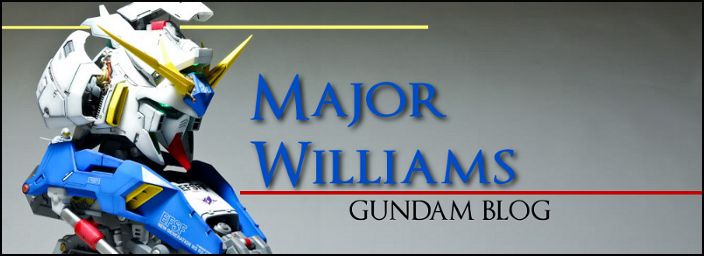
I'll be showing you this time the steps needed to ensure that your paint will stick to the pieces you're going to be painting.
Materials needed:
- Testors Plastic-Prep (~$7.50)
- Tweezers
- Bowl and Dish soap
- Q-tips
- Pin Vise
- Drill Bits
- Potentially a drill
- Gloves

Using my nub management guide, I cut out and sanded all the runners and put them into plastic bags. This took about a week or two because of finishing the Sinanju and other time commitments.

To make painting a little easier, and the whole process more complete, I am using Testor's Plastic Prep (~$7.50). It will release the molding agents, oils, static and dust that the pieces naturally accumulate over time so it can hold paint better. Good stuff - and you can really tell the difference after using it.

First, you have to wash your parts for 10 minutes in warm soapy water.

Let them dry completely, and while that's being done, put some of the Plastic Prep into a container - I like to use glass candle holders - they're around $1 at Target/Wal-mart, and are the perfect size for this and holding paint.

Dip each of the parts completely in the solution. If you have larger parts, or don't want to dip, you can use a Q-tip and wash the surface of each piece (more tedious, but perfect for larger pieces).

The instructions say to let it dry completely without wiping it off. It takes quite a while if you dip your parts - nearly 20-30 minutes! If you use a Q-tip, the drying is within 5 minutes.
PART 2: Exercising holes for painting

Using a pin vise, your hand, or an actual drill, exercise the holes where your parts will fit into the underarmor. If you are painting the underarmor too, exercise those holes as well. Make sure you use a drill bit that is slightly larger (only by a little bit), and don't make the hole too big either. Your goal is to make the piece just loose enough to be able to fit into place and easily be taken off.

Here I'm using a drill. Sometimes, some holes are too big with the drill bits I have on hand and I don't feel like getting others, so I gently drill (slowly), and move the bit in a circular motion around the hole to shave off some of the plastic. Easy peasy.
Once these two processes are done, you can then begin assembling your model! Keep in mind you are only putting it together to get an idea of what everything looks like - you WILL be disassembling it again to paint/panel line. Assembly shouldn't take too long here either, a few hours max!
I had seen this done on a model making show, and the guy used this technique to frame up how he was going to draw panel lines and to see what he was going to paint. Total pro technique. Once he was finished with his model, he just glued the non-moving parts into place. Hope this helps!
Will post soon with my Unicorn update!



Would you recommend a degreasing the plastic parts like resin parts?
ReplyDeleteReferring to the pre painting chemical, is it corrosive?
ReplyDeletethe plastic perp, sounds the same as degreaser. Purple power is a bit more expensive but it has way more when you buy the gallong.
ReplyDelete